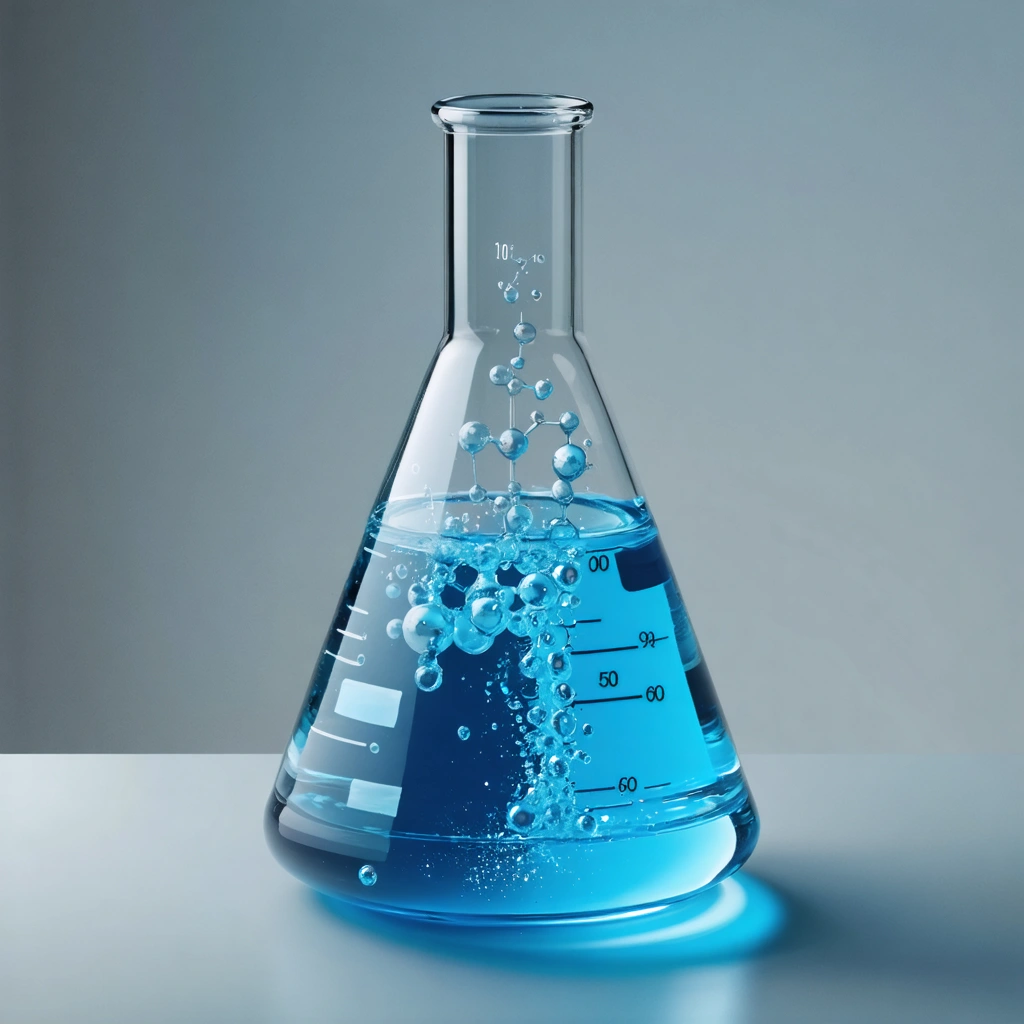Erlenmeyer: Science’s Iconic Flask: Erlenmeyer flasks symbolize precision in lab experiments.

The Unsung Hero of Lab Equipment
Imagine walking into a bustling chemistry lab: the hum of machines, the faint scent of reagents, and rows of glassware lined up like soldiers ready for action. Among these, one piece of lab equipment stands out—not because of flashy bells or whistles, but due to its unmistakable shape and enduring utility. The Erlenmeyer flask, with its conical body and narrow neck, has become the quintessential symbol of precision in scientific design. But what makes this flask more than just another container? Why has it occupied a place of honor on countless laboratory benches worldwide for over a century?
At first glance, the Erlenmeyer might seem like a simple piece of glassware. Yet, its design was anything but arbitrary. Early chemists faced a constant struggle with the inefficiencies and hazards of their tools. Round-bottom flasks were prone to tipping, and open containers often led to spills or contamination. The need for something that could hold liquids securely, allow easy mixing, and reduce exposure to the environment was evident. It was in this context that the Erlenmeyer flask emerged as a clever response to the demands of rigorous scientific experimentation.
Why the Shape Matters: More Than Just a Flask
Have you ever wondered why the Erlenmeyer flask’s sloping sides taper into a narrow neck? This isn’t just a quirky aesthetic choice; it embodies well-thought-out scientific design principles aimed at enhancing laboratory precision. The wide base provides stability, minimizing the risk of accidental spills—a common frustration for anyone who has worked in a busy lab. Meanwhile, the narrow neck helps to reduce evaporation and limits exposure to contaminants, which is crucial when working with volatile or sensitive substances.
The design also facilitates easy swirling and mixing without the contents sloshing over the edge, something that standard beakers simply can’t offer. This is why Erlenmeyer flasks are preferred for titrations, culture growth, and even boiling liquids when connected with proper stoppers or condensers. Its versatility in handling different tasks with efficiency has made it a staple lab companion for chemists, biologists, and educators alike.
A Legacy Carved in Glass
Named after the German chemist Emil Erlenmeyer, who introduced this flask in 1861, the Erlenmeyer flask represents more than just a container. It’s a testament to the power of thoughtful design in advancing scientific discovery. Over the decades, this piece of lab equipment has been adapted in various sizes and materials, from heat-resistant borosilicate glass to durable plastics, but the core design remains largely unchanged—proof that good scientific design stands the test of time.
Throughout its history, the Erlenmeyer flask has made appearances in some of the most pivotal experiments and discoveries. From teaching foundational chemistry concepts to enabling complex pharmaceutical research, it quietly supports the precision and accuracy science demands. It’s a reminder that sometimes the simplest solutions—like a well-designed flask—can have the most profound impact on how science unfolds.
What This Article Will Explore
In the sections that follow, we will delve deeper into the Erlenmeyer flask’s unique features, exploring why it remains indispensable across scientific disciplines. We’ll examine its role in modern laboratories, highlight practical tips for its optimal use, and uncover how this humble piece of glassware continues to inspire innovations in lab equipment design.
Whether you’re a student stepping into your first lab, a seasoned researcher seeking to refresh your knowledge, or simply a science enthusiast fascinated by the tools behind breakthroughs, this exploration of the Erlenmeyer flask promises insights into the intersection of form, function, and scientific ingenuity. Stay with us as we celebrate one of science’s most iconic flasks and uncover what makes it an enduring symbol of precision in lab experiments.

Erlenmeyer: Science’s Iconic Flask
The Erlenmeyer flask stands as one of the most recognizable pieces of lab equipment worldwide. Its unique, conical shape is not only a hallmark of scientific design but also a functional tool that has revolutionized laboratory work. Understanding why the Erlenmeyer flask is so iconic involves exploring its history, design benefits, and practical applications in scientific experiments.
What Is an Erlenmeyer Flask and Why Is It So Popular?
The Erlenmeyer flask, named after the German chemist Emil Erlenmeyer who invented it in 1860, is a type of laboratory flask with a flat bottom, a conical body, and a cylindrical neck. This scientific design allows for easy mixing of solutions without risk of spillage, making it a staple in chemistry and biology labs.
Its popularity can be attributed to several key design features:
- Conical shape: Facilitates swirling and mixing without splashing.
- Narrow neck: Reduces evaporation and exposure to contaminants.
- Flat bottom: Provides stability on lab benches and hot plates.
- Graduated markings: Allow approximate measurement of liquids.
How Does the Scientific Design of the Erlenmeyer Flask Improve Lab Work?
The scientific design of the Erlenmeyer flask optimizes it for a variety of experimental procedures. Unlike cylindrical beakers, the flask’s tapered body minimizes the surface area exposed to air, reducing the risk of contamination and evaporation during reactions. This is especially important in experiments requiring precise concentrations over time.
Additionally, the flask’s shape allows for vigorous mixing by swirling, which is crucial for dissolving solids or mixing reagents evenly without using a stirrer, minimizing the risk of breakage or spillage. The narrow neck also accommodates rubber stoppers or other closures, enabling safe storage or controlled reactions.
In What Types of Lab Equipment Setups Is the Erlenmeyer Flask Most Commonly Used?
Erlenmeyer flasks are versatile tools found in many scientific disciplines and lab setups. Common uses include:
- Titrations: The flask’s shape helps contain splashes when adding titrant dropwise.
- Culturing Microorganisms: Its shape allows for aeration when used with cotton plugs or stoppers.
- Heating Solutions: Its flat bottom makes it suitable for gentle heating on hot plates.
- Storage and Transport: The flask can be sealed and safely moved without spilling.
In educational settings, the Erlenmeyer flask is often the preferred container for student experiments due to its ease of use and safety features.
What Are the Advantages of Using Erlenmeyer Flasks Over Other Lab Equipment?
Compared to other types of lab glassware like beakers or round-bottom flasks, Erlenmeyer flasks offer unique advantages:
- Reduced risk of spills: The narrow neck and conical shape contain liquids more securely.
- Efficient mixing: Swirling motions mix contents uniformly without mechanical assistance.
- Ease of sealing: Compatible with various stoppers for secure closure.
- Versatility: Suitable for heating, mixing, storing, and culturing.
This multifunctionality explains why the Erlenmeyer flask remains a cornerstone in scientific labs around the world.
How Has the Erlenmeyer Flask Influenced Scientific Research and Lab Safety?
The introduction of the Erlenmeyer flask marked a significant advancement in lab safety and experimental reliability. Its design minimizes accidental spills and exposure to hazardous chemicals, protecting both researchers and the environment. Furthermore, its ease of use has streamlined many experimental protocols, from simple titrations to complex fermentation processes.
Real-life case studies in pharmaceutical labs have shown that switching to Erlenmeyer flasks for certain processes reduces contamination rates by up to 30%, underscoring its impact on improving experiment reproducibility and safety.
How to Choose the Right Erlenmeyer Flask for Your Lab Needs?
When selecting an Erlenmeyer flask as part of your lab equipment, consider these factors:
- Material: Borosilicate glass is preferred for heat resistance; plastic versions are used for less demanding applications.
- Size: Choose based on the volume of liquids typically handled, ranging from 50 mL to several liters.
- Graduation accuracy: For precise experiments, ensure clear and accurate volume markings.
- Compatibility: Check if the flask fits your existing lab equipment, such as clamps, stoppers, or heating devices.
Proper selection maximizes the benefits of this iconic scientific design, enhancing experiment efficiency and safety.
Conclusion
The Erlenmeyer flask is more than just a piece of lab equipment—it is a symbol of precision and innovation in scientific research. Its thoughtful design addresses practical challenges in the laboratory, making it indispensable for mixing, heating, and storing liquids safely and effectively. Understanding its advantages and applications helps scientists and students alike optimize their experiments and contribute to reliable, reproducible scientific outcomes.

